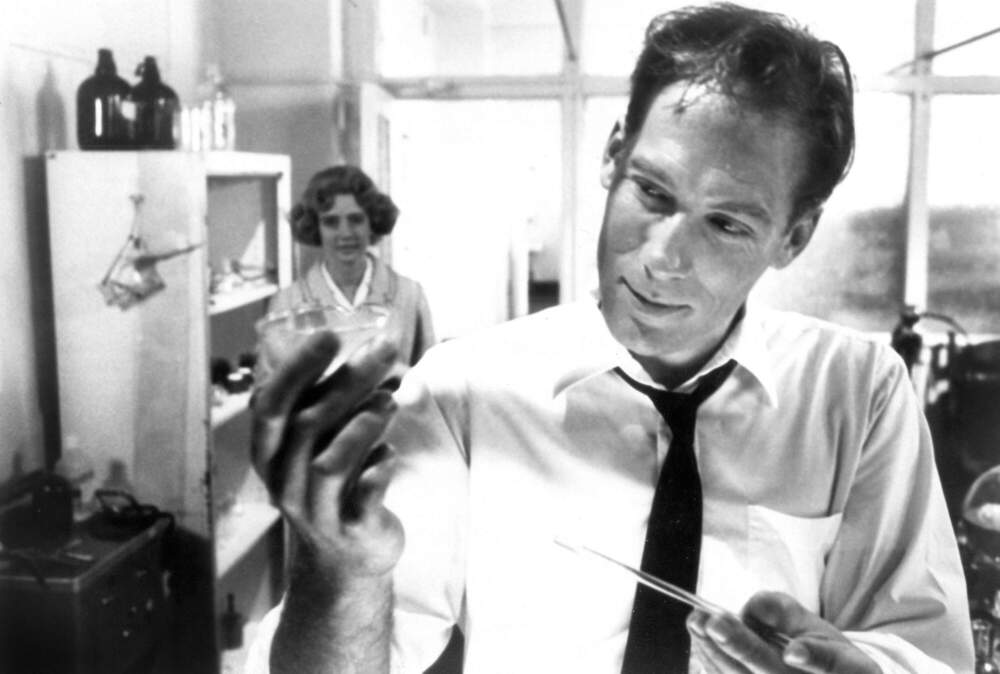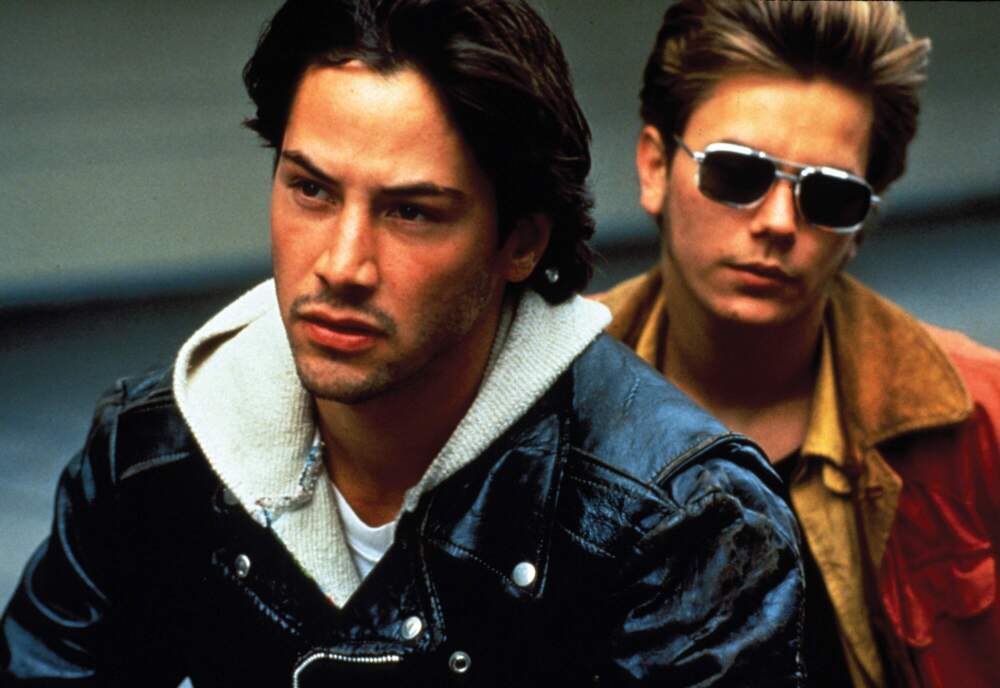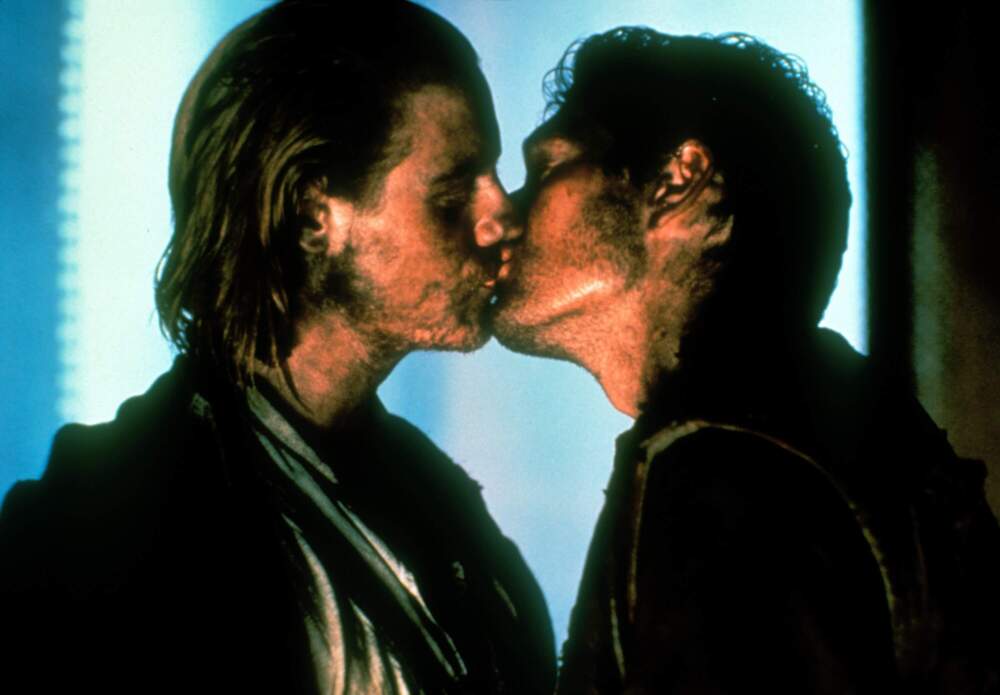Advertisement
The Coolidge celebrates Pride month with queer film retrospective

2024 has already been shaping up to be a terrific year for LGBTQ+ stories on the big screen, with Rose Glass’ “Love Lies Bleeding,” Ethan Coen and Tricia Cooke’s “Drive-Away Dolls” and Jane Schoenbrun’s “I Saw the TV Glow” all expanding boundaries of queer representation at mainstream multiplexes, while the bi-curious shenanigans of “Challengers” ventured into territory once unthinkable for major studio releases. Theda Hammel’s “Stress Positions” and Vera Drew’s “The People’s Joker” may not have been to this critic’s taste, but their arthouse popularity is a heartening sign for a movie landscape in which, just recently, Judd Apatow and Billy Eichner’s sanctimonious 2022 flop “Bros” kept stopping to congratulate itself for stuff that independent films were already doing three decades ago.
In 1992, the term New Queer Cinema was coined by critic B. Ruby Rich in The Village Voice to characterize the explosion of gay-themed movies that became a crucial component of the early ‘90s indie film revolution. Scrappy, confrontational and blessedly unconcerned with respectability politics, these pictures came from a community in crisis. They’re often furious documents, raging against societal and government indifference to a plague that’s powerfully felt even in the films where AIDS is never explicitly mentioned. To celebrate Pride month this year, the Coolidge Corner Theatre is taking a look back at six of those trailblazing titles with a four-week retrospective co-presented by their friends at Wicked Queer, the film festival with the coolest name in town.
Talk about a blast from the past. Hot on the stiletto heels of last summer’s surprisingly successful rerelease of Gregg Araki’s “The Doom Generation,” the Coolidge lineup includes a new 4K restoration of “Nowhere,” the final chapter in the filmmaker’s “Teen Apocalypse Trilogy.” (The screening on Tuesday, June 25 is an unexpurgated cut of the film including naughty bits snipped from the original 1997 release for ratings purposes.) Also recently restored is Isaac Julien’s 1991 pirate radio period piece “Young Soul Rebels,” with the Tuesday, June 11 screening preceded by a seminar from Wicked Queer executive director Shawn Cotter. It all closes out on Sunday, June 30 with Rose Troche and Guinevere Turner’s delightful 1994 lesbian rom-com “Go Fish,” but we’re getting ahead of ourselves here.

The series begins Tuesday, June 4 with Todd Haynes’ 1991 feature debut “Poison,” one of the decade’s most pungent provocations and the announcement of a major talent who would help define the New Queer Cinema movement. It’s a triptych of seemingly unrelated short films inspired by three Jean Genet novels, with an unspoken AIDS-era subtext that’s all but screaming through the imagery. As seen in his great 2002 melodrama pastiche “Far from Heaven” and last year’s true crime hall of mirrors “May December,” Haynes is a brilliantly subversive mimic of media styles, borrowing the visual languages of everything from a chintzy tabloid television documentary to a 1950s monster movie for these stories of abuse, contagion and secret shames.
Any other filmmaker would present the three short films in discrete installments, but Haynes intercuts them all together. As in his 2007 “I’m Not There,” — which followed six different Bob Dylans played by six different actors — he’s somehow able to make the movies flow through wildly opposing styles and sensibilities happening at the same time, orchestrating the edits on a purely emotional level with a continuity that defies linear logic yet somehow feels absolutely right. I still don’t know how he does it.
This critic’s personal favorite of the films in the series — and one of my favorite films of the ‘90s, period — is “My Own Private Idaho,” screening on Sunday, June 9. Gus Van Sant’s anarchic 1991 adaptation of Shakespeare’s “Henry IV” stars River Phoenix and Keanu Reeves as Portland street hustlers turning tricks between iambic pentameter soliloquies and absurdist comic interludes that just barely stave off the film’s ineffable sadness. This Gen X “Midnight Cowboy” features a profoundly moving performance from Phoenix as a narcoleptic misfit aching for Reeves’ imperious heir, and during a devastating campfire sequence, you can see the young actor ascending to James Dean-levels of screen legend. (It’s an even more difficult scene to watch today, haunted by all the brilliant performances we were denied following Phoenix’s death from a drug overdose in 1993.)

One of my most memorable moviegoing memories was going to see “My Own Private Idaho” on opening night at the long-gone Loews theater on Church Street in Harvard Square. The place was packed with teenage girls, there to see Tiger Beat dreamboats River and Keanu, shrieking in horror at an early shot of the actors romping in bed together. (The gals all stayed until the end of the movie, though.) There’s no way to overstate what a radical career choice this was for two teen idols at the time. Reeves was coming off the first “Bill and Ted” movie while Phoenix had followed up his Oscar nomination for Sidney Lumet’s “Running on Empty” by playing the young Indiana Jones. I’m sure nobody’s agent was thrilled when the two friends decided to star as gay-for-pay druggies in an independent film.
I didn’t scream like those little girls, but “My Own Private Idaho” was a revelation to this 16-year-old boy. It felt like a whole movie made out of things you weren’t supposed to be allowed to do in movies. Van Sant’s kooky time-lapse photography and flagrant disregard for narrative convention were intoxicating in their reckless freedom. Some critics called the movie undisciplined, and that’s exactly what was so cool about it! One of the wildest sequences finds our characters posing on the covers of gay porno magazines. Then the magazine covers come alive and start talking to the audience. Then they all start arguing with each other. What kind of crazy person made this? (Also, not to put too fine a point on it, but for someone growing up in a time when now-unprintable homophobic slurs were considered acceptable parts of everyday conversation, the movie’s outsider empathy probably did me a lot of good.)
Advertisement

In the interests of equal time, the Elizabethan era’s second-greatest playwright is also represented in Derek Jarman’s “Edward II,” a stripped-down 1991 adaptation of Christopher Marlowe’s play boasting a barn-burning performance from future queer icon Tilda Swinton. Jarman, who died of AIDS in 1994, was an artist and an activist who got his start as a production designer on Ken Russell’s oft-banned, blazingly blasphemous “The Devils.” Shot in empty stone caverns with minimal props and mostly modern costumes, his “Edward II” foregrounds the forbidden relationship between the king and his favorite, Piers Gaveston, cramming the screen with contemporary signifiers, in-your-face allusions and graphic sex scenes I don’t remember being in Marlowe’s play.
Edward leads an army of leather-jacketed ACT UP activists, while Gaveston is strangled by a cop in an illegal choke hold. In a shadowy dungeon, we find Annie Lennox singing Cole Porter’s “Ev’ry Time We Say Goodbye,” which she’d recorded for the AIDS awareness benefit album “Red Hot + Blue” the previous year. Indeed, one of the things I find so exciting about films of the New Queer Cinema is how they incorporated the work of older artists like Genet or Shakespeare or Porter to speak to the present moment, much in the way we can look back on these now-classic movies to help us understand where we are today.
“New Queer Cinema” runs at the Coolidge Corner Theatre from Tuesday, June 4 through Sunday, June 30.
